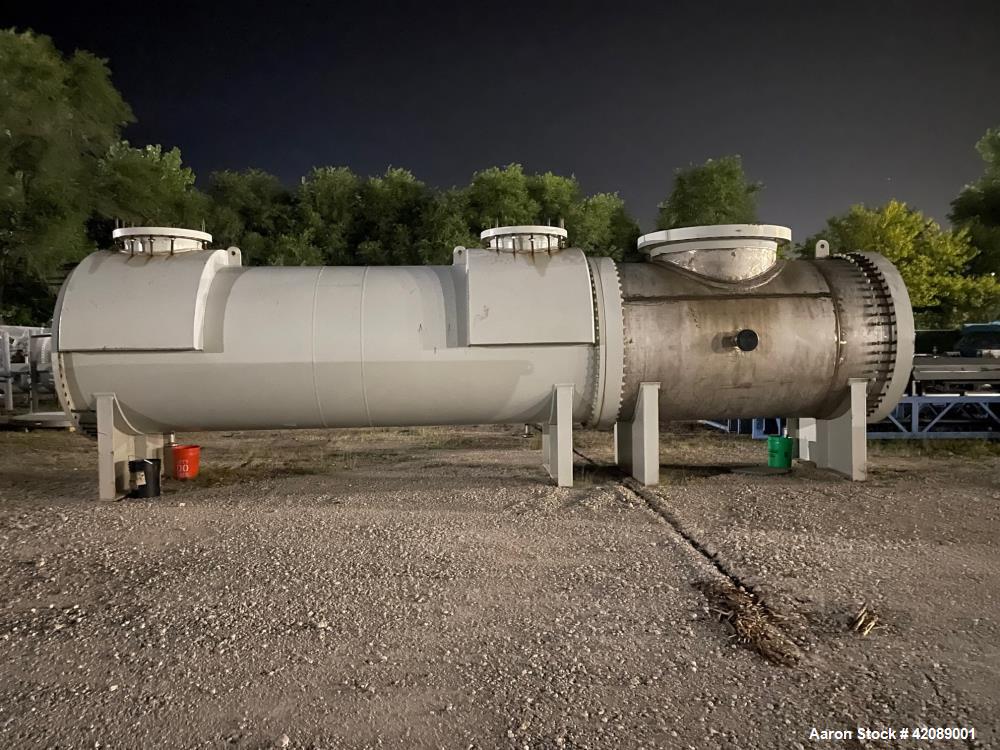Why Are DVS Heat Transfer Systems Ideal for Aerospace Thermal Solutions?
Wiki Article
Innovations in Heat Transfer Equipments: What You Need to Know for Optimum Efficiency
Developments in Heat transfer systems are transforming performance throughout different sectors. Advanced materials like graphene and nanofluids assure considerable enhancements in thermal conductivity. On the other hand, the assimilation of IoT and maker knowing supplies opportunities for real-time surveillance and enhanced power performance. The landscape of thermal management is swiftly developing. Comprehending these growths is necessary for achieving suitable system efficiency and sustainability in the future. What certain developments are shaping this change?Arising Materials for Boosted Heat Transfer

Advanced Heat Exchanger Designs
While traditional Heat exchangers have offered their objective in different applications, advanced layouts are now emerging to meet the increasing needs for effectiveness and performance. These ingenious layouts, such as plate, shell-and-tube, and finned-tube Heat exchangers, incorporate improved surface and enhanced flow patterns to enhance thermal transfer prices. In addition, compact designs allow for lowered room demands without compromising efficiency. Advanced products, such as compounds and corrosion-resistant alloys, furthermore boost sturdiness and efficiency under extreme problems. Simulation innovations and computational fluid dynamics are significantly utilized to fine-tune these layouts, making sure peak Heat transfer characteristics. As markets look for to reduce power consumption and maximize result, the adoption of sophisticated Heat exchanger layouts is pivotal in accomplishing these purposes.The Function of Nanotechnology in Heat Transfer
Nanotechnology plays a crucial duty in improving thermal conductivity within Heat transfer systems. By controling products at the nanoscale, scientists have actually achieved significant renovations in energy performance. These improvements not just optimize efficiency however also add to even more sustainable energy options.Boosted Thermal Conductivity
Significant innovations in thermal conductivity have actually emerged via the application of nanotechnology, transforming Heat transfer systems throughout different markets. By integrating nanoparticles into Heat transfer fluids and products, scientists have actually accomplished remarkable rises in thermal conductivity. These nanoparticles, such as carbon nanotubes, graphene, and steel oxides, enhance the Heat transfer residential or commercial properties because of their high surface and distinct thermal characteristics. The resulting composites display boosted efficiency in applications ranging from electronics cooling systems to renewable resource modern technologies. The capability to tailor the size, shape, and composition of nanoparticles enables for enhanced thermal administration services. Consequently, nanotechnology continues to play a crucial function in the development of more reliable and effective Heat transfer systems, leading the way for boosted commercial applications.
Energy Performance Improvements

Combination of IoT in Heat Transfer Solutions
The assimilation of IoT in Heat transfer systems presents the implementation of clever sensing units that improve operational performance. These sensing units allow real-time data surveillance, permitting prompt changes and optimizations. This technological innovation has the potential to substantially improve efficiency and energy administration in Heat transfer applications.Smart Sensors Execution
As Heat transfer systems advance, the assimilation of clever sensing units with the Internet of Things (IoT) has actually arised as a transformative method. These sensing units enable real-time surveillance of temperature, stress, and flow prices, enhancing system effectiveness and reliability. By collecting and sending information, they promote proactive maintenance, minimizing the danger of system failings. Furthermore, clever sensing units add to energy savings by refining functional navigate to this site criteria based on environmental conditions. Their ability to examine patterns and anomalies enables informed decision-making, making sure peak efficiency of Heat transfer systems. As markets significantly embrace this modern technology, the implementation of wise sensors stands to revolutionize exactly how Heat transfer systems are handled, leading the way for higher sustainability and boosted performance results.Real-Time Data Surveillance
How can real-time data keeping an eye on more info here boost the performance of Heat transfer systems? By incorporating Net of Points (IoT) modern technology, Heat transfer systems can utilize continual information collection from smart sensing units. This real-time tracking permits prompt evaluation of stress, flow, and temperature rates, allowing operators to determine inefficiencies immediately. Adjustments can be made to maximize efficiency, minimize energy usage, and extend tools life-span. Furthermore, predictive maintenance can be implemented, decreasing unforeseen downtime and costly repair work. The capacity to imagine efficiency metrics via control panels boosts decision-making, cultivating a positive technique to system monitoring. Eventually, real-time data keeping an eye on not only improves functional efficiency yet likewise adds to sustainability goals within commercial procedures.Power Effectiveness and Sustainability Trends
Energy efficiency and sustainability trends are reshaping the landscape of Heat transfer systems, driving innovation and conformity across numerous markets. Organizations are progressively focusing on energy-efficient designs to reduce operational prices and reduce environmental influences. The assimilation of renewable energy sources is becoming extra widespread, enabling Heat transfer systems to run sustainably while meeting regulative needs. Furthermore, developments in innovations and products promote reduced energy consumption and enhance general performance. Lifecycle analyses are likewise gaining grip, allowing business to examine the ecological effect of Heat transfer systems from manufacturing to disposal. This emphasis on sustainability not only supports business duty yet likewise positions organizations competitively in a market where consumers significantly favor environment-friendly options. Subsequently, energy effectiveness and sustainability stay crucial considerations for future advancements in Heat transfer innovation.Advancements in Thermal Management Solutions
While the need for effective Heat transfer proceeds to climb, advancements in thermal management services are emerging to address both efficiency and sustainability difficulties. Advanced materials, such as stage change products and nanofluids, are being developed to boost Heat transfer efficiency - DVS Heat Transfer Systems. These products enhance thermal conductivity and enable much better temperature policy in various applications. Furthermore, innovations like active thermal control systems are acquiring traction, enabling real-time changes to take care of Heat circulation efficiently. These systems add to power cost savings and go to the website decrease the ecological effect of thermal processes. The integration of IoT in thermal management helps with monitoring and predictive upkeep, making certain optimized performance and long life of Heat transfer systems. On the whole, these innovations stand for significant strides toward more sustainable thermal administration techniquesFuture Directions in Heat Transfer Technology
Emerging advancements in thermal management options indicate an appealing future for Heat transfer innovation. Researchers are significantly concentrating on creating materials with remarkable thermal conductivity and improved power efficiency. Advancements such as nanofluids, which contain put on hold nanoparticles, supply significant renovations in Heat transfer efficiency. In addition, the assimilation of smart products that adapt to varying temperature problems is gaining traction, enabling for even more responsive and reliable systems. The rise of additive production strategies is also allowing the design of complicated Heat exchanger geometries that maximize liquid circulation. The application of equipment learning algorithms is prepared for to reinvent the optimization of Heat transfer systems, facilitating anticipating maintenance and efficiency improvement. Collectively, these innovations are positioned to transform the landscape of Heat transfer innovations in numerous sectors.
Often Asked Concerns

Exactly how Do I Select the Right Heat Transfer System for My Application?
Choosing the ideal Heat transfer system includes evaluating application requirements, consisting of temperature level ranges, liquid properties, and performance needs. Analyzing system types, upkeep considerations, and cost-effectiveness additionally plays an essential duty in making an educated decision.What Are the Maintenance Requirements for Advanced Heat Exchangers?
Maintenance demands for sophisticated Heat exchangers normally consist of normal examinations, monitoring for leakages, cleansing of surface areas, and assuring excellent circulation rates. Sticking to producer standards assurances effective operation and extends the devices's life expectancy.
Exactly How Do Ecological Aspects Impact Heat Transfer Efficiency?
Ecological factors considerably influence Heat transfer performance. Variants in moisture, temperature, and air movement impact thermal conductivity and convective Heat transfer, inevitably impacting system efficiency and requiring factor to consider during the design and operation of Heat transfer systems.What Safety Criteria Relate To Heat Transfer Systems?
Safety requirements for Heat transfer systems generally consist of guidelines from organizations such as ASME and ASTM. DVS Heat Transfer Systems. These criteria address materials, style, and functional practices to ensure reliability, effectiveness, and protection against threats in numerous applications
How Can I Troubleshoot Usual Heat Transfer System Issues?
Fixing usual Heat transfer system problems entails inspecting for leaks, ensuring proper fluid circulation, examining insulation honesty, and verifying temperature level differentials. Recognizing these aspects can help keep system performance and prevent more problems.Nanotechnology plays a crucial role in enhancing thermal conductivity within Heat transfer systems. Significant improvements in thermal conductivity have actually arised via the application of nanotechnology, changing Heat transfer systems throughout various industries. Advancements in thermal conductivity via nanotechnology have actually paved the method for amazing renovations in power performance within Heat transfer systems. Power performance and sustainability fads are improving the landscape of Heat transfer systems, driving development and conformity throughout numerous sectors. The assimilation of IoT in thermal management helps with surveillance and predictive upkeep, making sure enhanced performance and long life of Heat transfer systems.
Report this wiki page